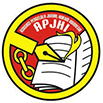PERADILAN AGAMA SEBAGAI LEMBAGA PENEGAK HUKUM ISLAM DI INDONESIA
Abstract
Full Text:
PDFReferences
Cahyani, Andi Intan. “Peradilan Agama sebagai Penegak Hukum Islam di Indonesia”, Jurnal Al-Qadau Peradilan dan Hukum Keluarga Islam, Volume 6, No. 1 (2019): hal. 129. https://journal.uin-alauddin.ac.id/index.php/al-qadau/article/download/9483/6676/.
Muhammad, Rusli, Potret Lembaga Pengadilan Indonesia. Jakarta: Raja Grafindo Persada, 2006.
Mujahidin, Ahmad. Peradilan Satu Atap Di Indonesia, Bandung: PT Refika Aditama, 2007.
Rasyid, Roiha A. Hukum Acara Peradilan Agama, Jakarta: Raja Grafindo Persada, 2016.
Republik Indonesia, Undang-undang No. 14 Tahun 1970 tentang Ketentuan-Ketentuan Pokok Kekuasaan Kehakiman, Lembaran Negara Republik Indonesia Tahun 1970 Nomor 74, Tambahan Lembaran Negara Nomor 2951.
Soekanto, Soerjono, dan Sri Mamudji, Penelitian Hukum Normatif: Suatu Tinjauan Singkat, Jakarta: Raja Grafindo Persada, 2003.
Subiyanto, Achmad Edi. “Mendesain Kewenangan Kekuasaan kehakiman setelah Perubahan UUD 1945”, Jurnal Konstitusi, Volume 9, Nomor 4, Desember 2012, h. 665-667.
Talli, Abdul Halim, Asas-asas Peradilan Dalam Risalah Al-Qada Kritik Terhadap Beberapa Asas Peradilan di Indonesia. Yogyakarta : UII Press, 2014.
Talli, Abdul Halim, Peradilan Agama Dalam Politik Hukum Islam. Jakarta: Raja Grafindo Persada, 2000.
DOI: http://dx.doi.org/10.28946/sjpl.v1i1.3373
Refbacks
- There are currently no refbacks.
Copyright (c) 2024 Sriwijaya Journal of Private Law
____________________________________________________________________________________________________________
EDITORIAL ADDRESS
Sriwijaya Journal of Private Law (SJPL)
Private Law Department, Faculty of Law, Sriwijaya University
Phone: +62711-580063 Fax: +62711-581179
Email: sjpl@fh.unsri.ac.id
OPEN ACCESS POLICY

Sriwijaya Journal of Private Law is an open access journal, so articles are freely available to the readers.
This work is licensed under a Creative Commons Attribution 4.0 International License.











